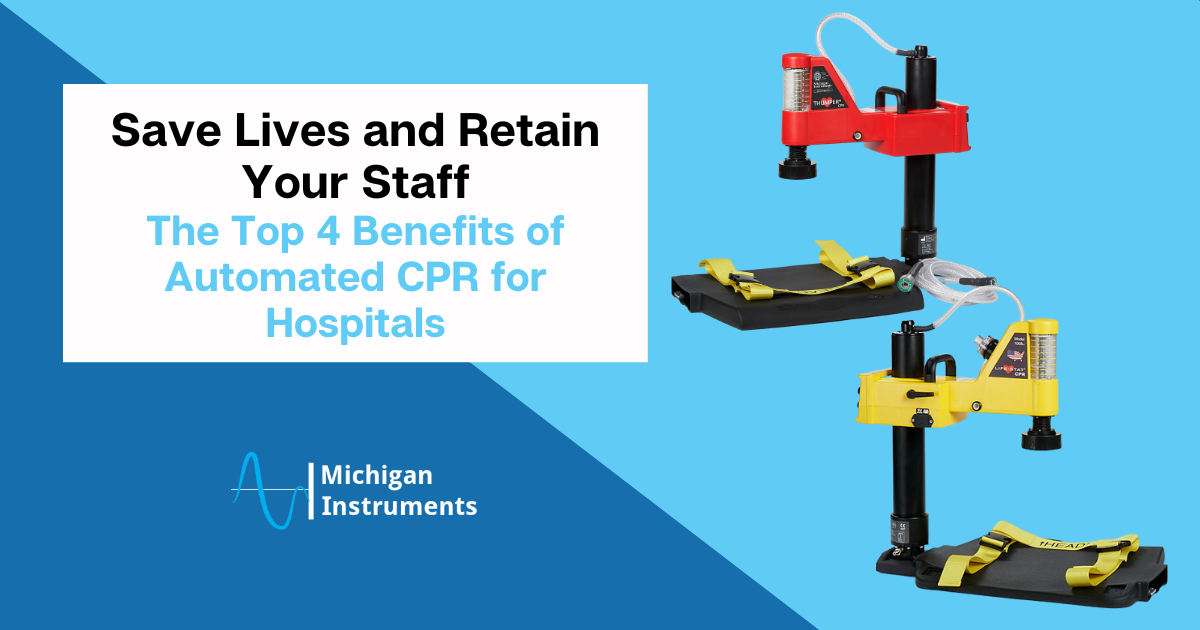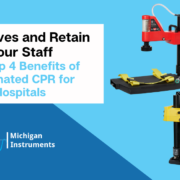
For some, winter means enjoying the holidays, participating in snow sports, and spending time with family and friends. However, winter also means an increase in 911 calls and emergency room visits due to illness, hazardous road conditions, shoveling snow, frostbite/hypothermia, as well as skiing and snowboarding. To avoid fatigue in CPR for your staff, you need a different solution.
When accidents and illness strike, hospitals and emergency rooms are flooded with patient inflow. How can automated CPR help ERs and hospitals manage this flow and save lives?
How to Avoid Fatigue in CPR: Automated CPR in Hospitals
During cardiac arrest, it’s crucial to secure high-quality chest compression through the entire event. However, it can be a challenge to maintain quality, consistent CPR to a cardiac arrest patient manually.
Automated CPR devices deliver uninterrupted, consistent chest compressions for as long as it takes. With this, healthcare providers can focus on other aspects of patient care, such as figuring out the underlying cause of the arrest.
4 Benefits of Automated CPR in Hospitals
How would your hospital benefit from Michigan Instruments’ automated CPR devices?
1. Easy to Use; Quick Conversion
Michigan Instruments’ mechanical CPR devices are simple to use and allow a quick transition from manual to automated CPR with minimal interruption to compressions. Minimizing this “hands-off” time during cardiac arrest can be a critical factor to a successful outcome.
2. Better Cerebral Perfusion
Our mechanical CPR devices deliver consistent chest compressions to a depth and at a velocity that can improve blood flow to the brain. Furthermore, the compression depth can be customized to each patient.
When used as directed, our devices deliver a compression depth that is 20% of the A-P diameter of the chest, in accordance with AHA guidelines calling for a compression depth of at least 2 inches.
3. Extended CPR
Manual CPR is physically challenging, but mechanical CPR offers uninterrupted and consistent chest compressions for as long as it takes.
All you will need is a connection to an oxygen source with no concern about running out of battery if the code is extended.
4. Accommodates Larger Patients
A patient’s size should never determine the quality of care they receive.
Both the Thumper and Life-Stat models accommodate larger patient sizes than any other automated CPR device on the market—both can adjust to a sternum height up to 14.5” and a chest width up to 22”.
To Avoid Fatigue in CPR, Improve Results with Automated CPR
Say goodbye to the physical fatigue of manual CPR by implementing automated CPR in your hospital. Our devices provide an “extra set of hands” and allow your team work on other aspects of the patient’s care, limit staff injury from the physical demands of manual CPR, and increase your patients’ chance of survival.
The Life-Stat and Thumper offer the best value in the market today with a low acquisition cost and a very low ongoing cost of ownership. Request a quote today!




